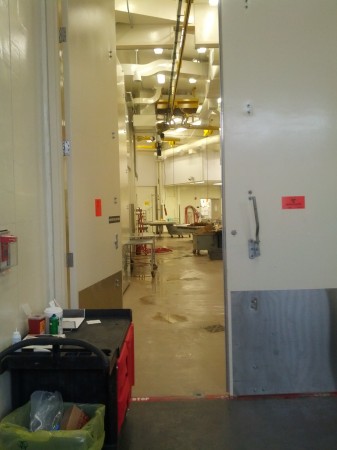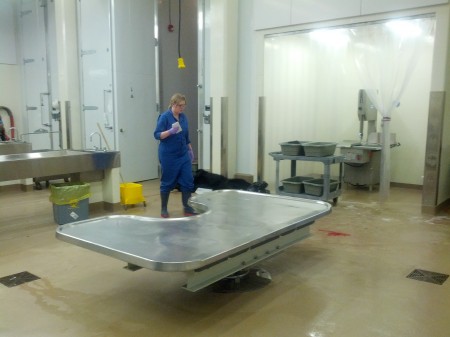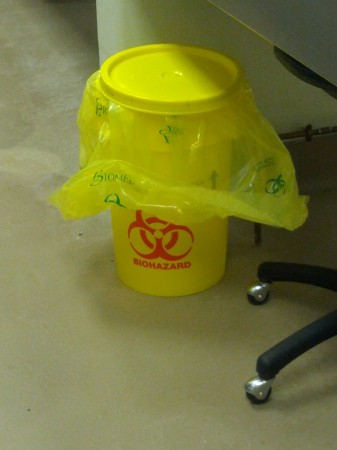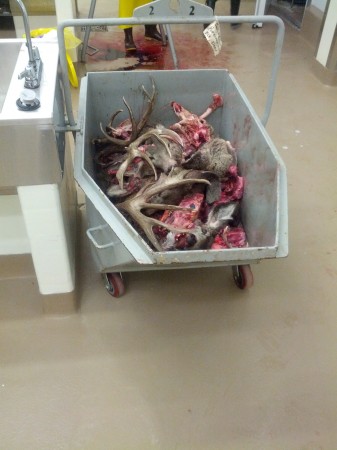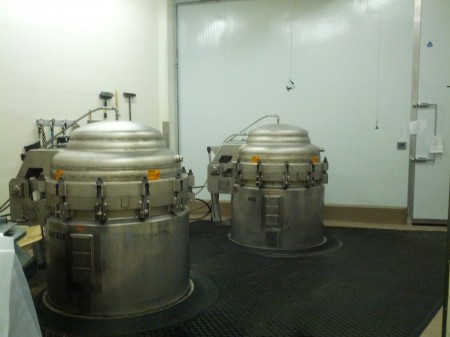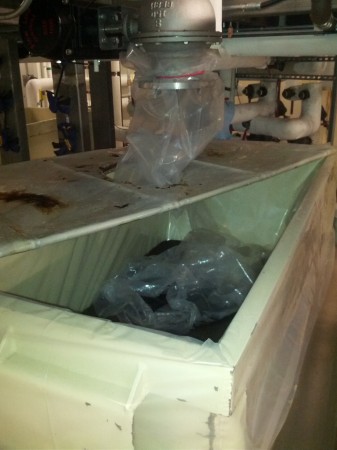Today I went on a fantastic workplace tour in preparation for a course field trip this semester. Prairie Diagnostics Service provides pathology and diagnostic tests for animal specimens.  They test wild and domestic animals for things like cancer and parasites, but also class 2 and 3 illnesses  like rabies, chlamydia, e. coli, salmonella, and BSE (‘mad cow disease’). Vegetarians and squeamish folks, click away now!
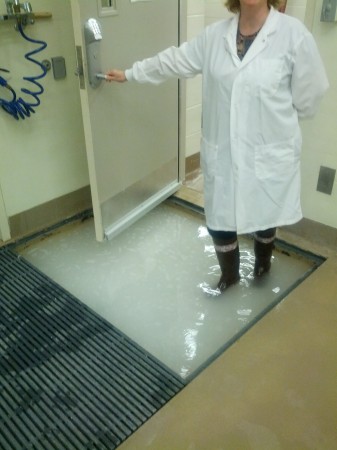
Lois, my intrepid guide, showed me all through the facility while we talked about how we can best relay information to the students.  As usual, I was interested in the work processes, but especially in the hazards present and the control strategies they use to mitigate them.  Here is a brief photo-essay on both…
- This is a dissection table. Is is hydraulic and piped with water for automatic rinsing. There is also a handy ergonomic cutout for reaching into large animals. Nice!
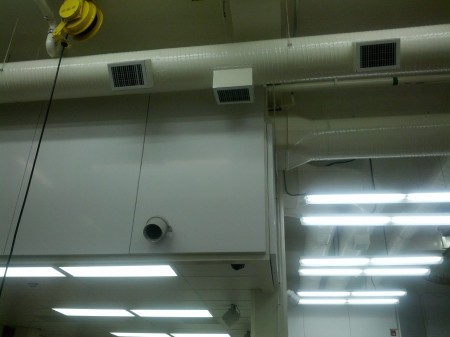
- Acoustic tiles and HVAC delivery vents
-
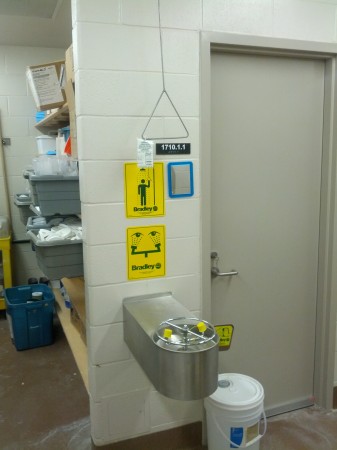
- Its a lab, so there are several showers and eye-wash stations.
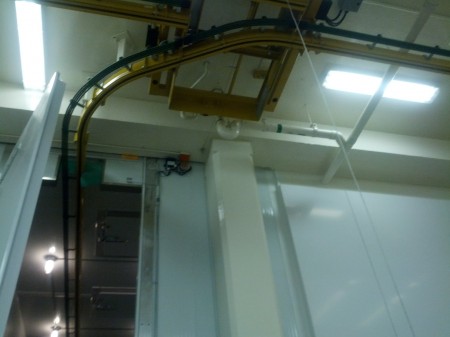
- This rail system comes in from the delivery area and has a crane/hoist to move large animals. Moose, horses, bulls, and everything down to a 10g piece of brain tissue comes into the lab
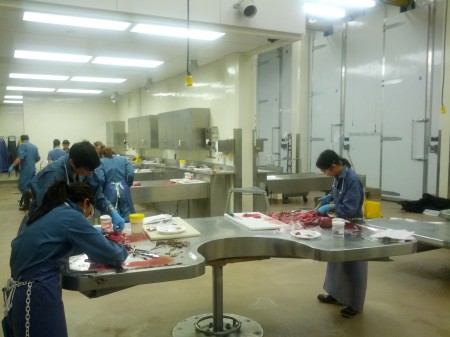 Some students doing dissections. These are mostly 3rd and 4th year Vet Med students doing their mandatory 2-week rotation in pathology.
Some students doing dissections. These are mostly 3rd and 4th year Vet Med students doing their mandatory 2-week rotation in pathology.

